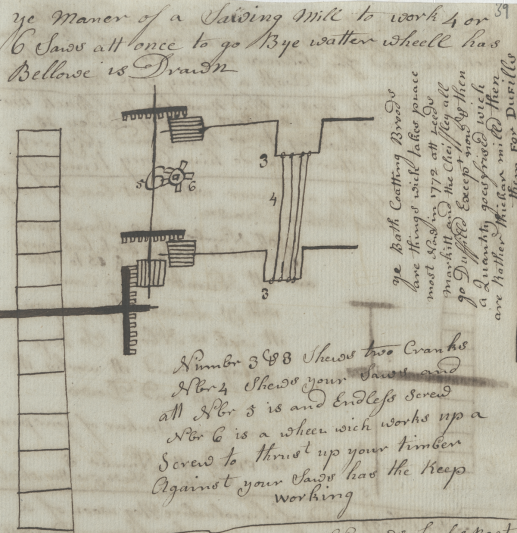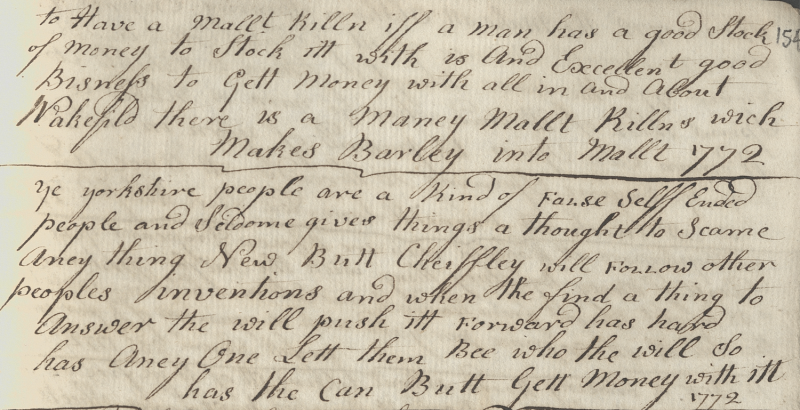David Asquith, President, writes: In 2020 Yorkshire Archaeological & Historical Society had an unexpected chance to acquire a manuscript ‘Memorandum Book’ for sale at a London auction house. Time to assemble the financial backing required to top up the Society’s own funds was short, but thanks to rapid and generous decisions by the Friends of the National Libraries, the Arts Council England/V&A Purchase Grant Scheme and donations from individual members the Society was able to mount a successful bid. Competition was stiff and the hammer price of £5,000 (plus premium) was significantly higher than the auctioneer’s estimate, which makes the Society especially grateful for the support which it received from FNL and others.
The curious nature of the manuscript itself may well have accounted for the price - it is a miscellany of personal thoughts and reflections on national events, human nature or the weather, but frequently relating to the textile industry in which the compiler, John Brearley of Wakefield, was engaged as a cloth ‘frizzer’. His interest in his industry is also evident in this manuscript, which he compiled in 1772-73, and includes 140 line-drawings to illustrate his ideas about the machinery of the day.
One note by Brearley indicates that it is his twelfth such book, which strongly suggests that two other similar memoranda books spanning 1758-62 are the first and second in a series which he kept over an extended period of time. These other books were given to the Leeds City Archives many years ago, and edited extracts were published in the Society’s Yorkshire Record Series in 2001. Whether or not his other nine volumes have survived, or whether any more followed number twelve, we do not know.
At present the Society has no plans to print extracts from this latest volume. Rather, it is intended to make digital images of the whole manuscript available online, free of charge. The handwriting is largely sufficiently legible so it requires only an introduction by a historian of the period, perhaps accompanied by some explanatory text. Regrettably, thanks to that well-known epidemic, it has so far proved impossible to bring this plan to fruition.
Given the distance in time between this manuscript and the other two, there is the possibility of comparative study of their contents in the social and economic context of the later 18th century. For example, the Royal Society for the Arts, Manufactures and Commerce was founded in 1754 and the British Museum in 1756. The newspaper the North Briton appeared in 1761; Hargreaves invented his ‘spinning jenny’ in 1764 and Arkwright his frame in the same decade. How many such events found their way into John Brearley’s mind and inspired him remains to be seen.

